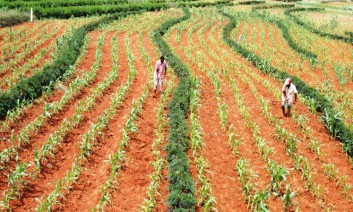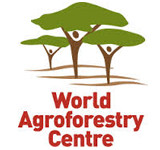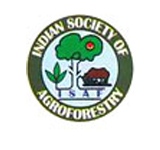
Vigyan Bhavan & Kempinski Ambience
10 - 14 February 2014
Delhi, India
blog

Agroforestry directly contributes to food and nutritional security in developing countries. Trees on farms and in the landscape provide food, fruit and medicines, support staple crop production, increase farm incomes, supply cooking fuel and provides services such as pollination that maintain other food sources.
With the challenges of rising food prices, a growing population and climate change, a combination of trees, staple crops, vegetables and livestock will provide year-round food and nutrition as well as buffer the impacts of climate change.
In sub-Saharan Africa, where nine of the 20 nations with the highest burden of children under-nutrition worldwide are found, the average consumption of fruit and vegetables is well below the minimum recommended daily intake. “Mixed agroforestry systems that mix locally important food trees with staple crops support nutrition, minimize risks and provide farmers with increased and stable incomes,” said Jamnadass.
“One area of huge potential for improving nutrition is in the range of less-used indigenous food found in forests and wooded lands,” said Ramni Jamnadass, head of research into tree diversity, domestication and delivery at the World Agroforestry Centre, and a session leader at the Congress. “Such trees are often much richer in micronutrients, fibre and protein than staple crops.”
Work is underway in Ghana, Nigeria and Tanzania to domesticate the indigenous allanblackia tree so that it can be grown in mixed agroforestry systems by smallholder farmers integrated with crops such as cocoa. Allanblackia produces edible oil that is highly valued in the global food market.
Growing agroforestry products such as coffee, palm oil, cacao, tea and rubber can increase farmers’ incomes and enable them to purchase food, but it is not without risk. Cash crops can result in the destruction of natural forests which contain important local foods. Food crops can also be displaced if there is a trend towards growing cash crops in monocultures.
“The key,” says Jamnadass “is to have a mix of systems.” But achieving this requires developments in agroforestry policies that reform tree and land tenure for the benefit of small-scale farmers, establish or improve systems that provide agroforestry inputs such as tree seed and seedlings, and encourage additional investment in agroforestry. Such developments will be considered in Session 3 of the Congress ‘The business of agroforestry: applying science’.






Sorry, comments for this entry are closed at this time.